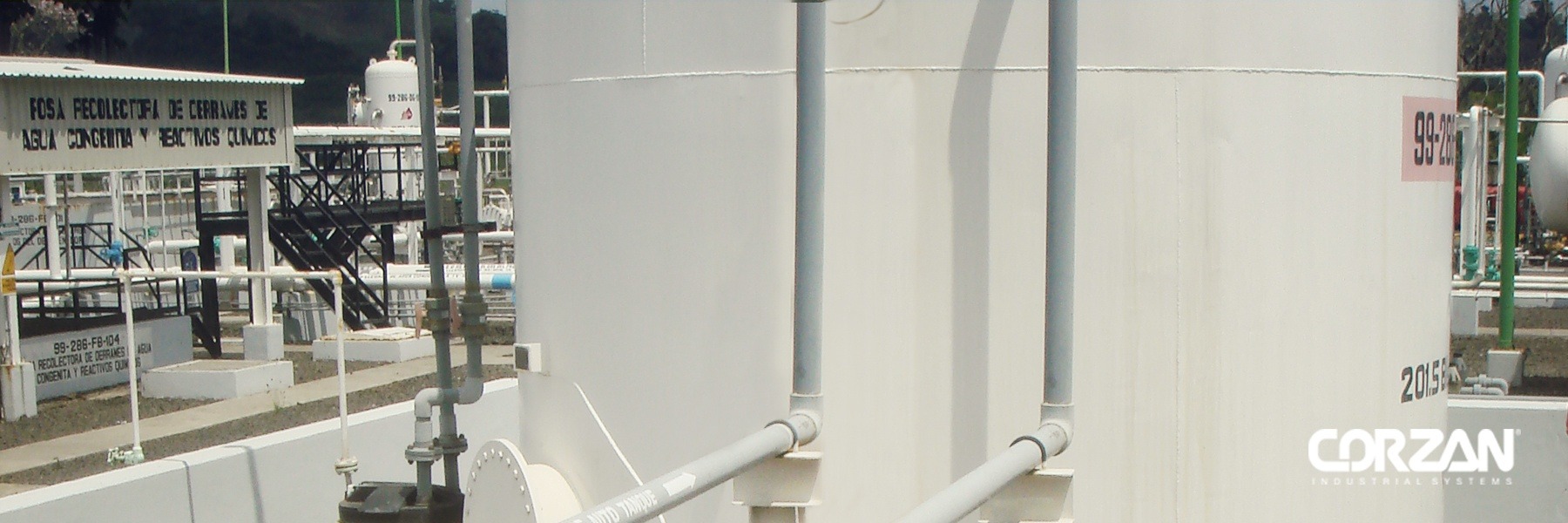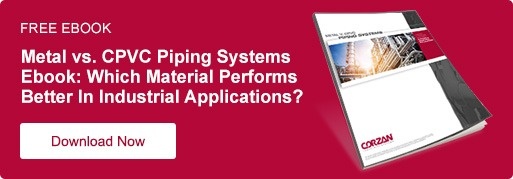How CPVC Improves Performance of Industrial Wet Scrubbers
In industrial applications with harmful particulate and pollutive byproducts, air scrubbers are often used to meet emissions standards. A scrubber is a system that cleans or purifies air by removing gasses, particulates, or otherwise harmful compounds from a system’s emissions.
There are many kinds of scrubbers available and their specific functions depend on the compound being removed from the processed stream. For example, power systems require scrubbers along with combustion vents to remove particulates from the generator or boiler.
In any scrubber that handles corrosive compounds, CPVC is a viable choice for tank lining, drain piping, and more. Wet scrubbers in particular, which use continuous sprays of neutralizing fluids to control harmful emissions, benefit from the chemical compatibility of CPVC to improve the performance and overall lifespan of the scrubber.
How Wet Scrubbers Work
Wet scrubbers spray a continuous flow of neutralizing liquid, which reacts with the emission, such as sulfur, to create a new compound in liquid form. The new compound falls to the bottom of the scrubber tank and is drained through a pipe, then safely discarded.
Various types of wet scrubbers exist to purify a number of emissions. Examples include:
- Sulfuric Acid scrubbers
- Chlorine scrubbers
- Chemical scrubbers
- Particulate scrubbers
Wet Scrubbers and CPVC
Because they typically handle corrosive compounds, wet scrubbers’ chemical interfaces must be made from an especially resistant material. A scrubber built with CPVC is a reliable choice for this application because its chemical compatibility allows for a long lifespan and consistent performance.
The neutralizing fluids in wet scrubbers are usually lime-based or sodium hydroxide caustic fluids, which can be corrosive to materials like stainless steel. The neutralizers can form condensation on the inside wall of the metal scrubber’s tank, which causes pitting corrosion over time.
CPVC, however, can stand up to these harmful chemicals with limited corrosion. Corzan® Industrial Systems’ Chemical Resistance Chart offers a better look at which chemicals Corzan CPVC best handles.
How CPVC is Used in Wet Scrubbing Systems
CPVC can be integrated in a number of functions within a wet scrubber.
- The venting duct: The gasses being carried to the scrubber can be corrosive, so metals and other materials may not withstand constant exposure.
- Chemical delivery: Often, the liquid neutralizer is itself a corrosive chemical and requires a resistant pipe to deliver it to the tank. Examples of scrubbers with this specification include caustic scrubbers and sulfuric acid scrubbers.
- The scrubber tank: The inside of the tank is commonly a corrosive environment due to the chemical being sprayed into the gas stream, as well as the gas stream itself. This is where pitting corrosion becomes an issue for materials such as stainless steel.
- Drain piping: Finally, once the neutralizer and the gas stream mix and a new compound falls to the bottom of the tank, it can be corrosive in nature. In this case, CPVC pipes and fittings are a strong choice for the drain piping.
CPVC as an Alternative to Metal
Just like in scrubbing systems, CPVC can be used as an alternative to other materials in many applications. Read Corzan Industrial System’s free e-book, “Metal v. CPVC Piping Systems” to learn various attributes of CPVC and how they compare to metal.
If you have questions about CPVC and how it’s used in industrial air scrubbers, our team of product and engineering specialists is ready to talk.


